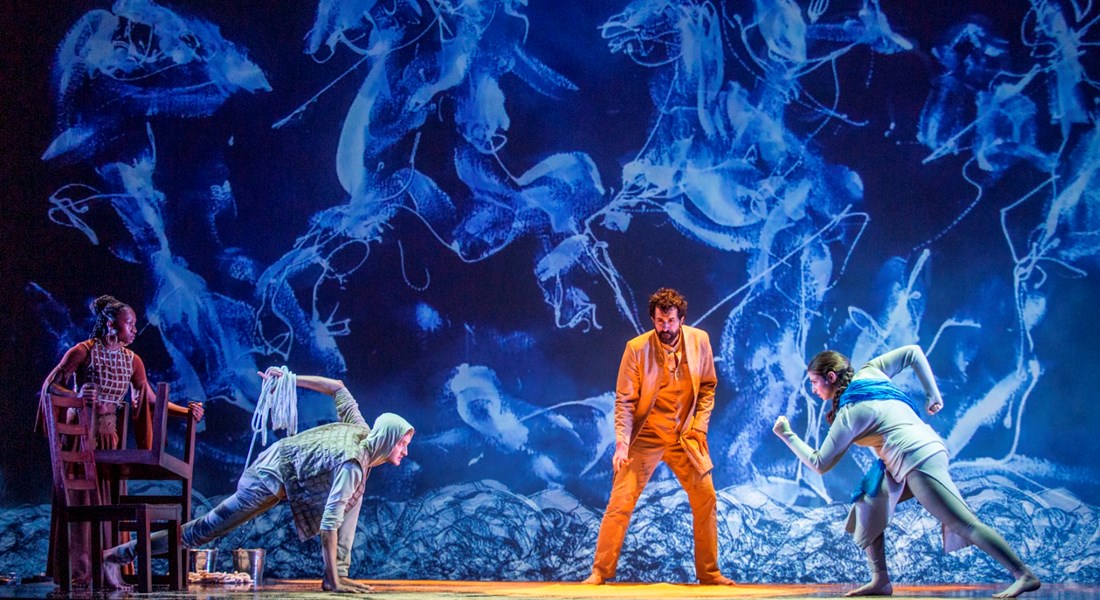Posted30 Jun 2023
- In
Unholy Wars Creator's Note
The Western musical canon is replete with material about faraway lands, and the Middle East is often a chosen subject.
From Mozart's Die Entführung aus dem Serail to the settings of Rimsky Korsakov and Ravel's Sheherazade to Disney's Aladdin, Arabs have long been represented, though mostly depicted as stereotypes based on limited to no firsthand knowledge by the creators.
The term "Middle East" itself is an invention of British colonialism and no one can seem to agree where the Middle East begins or ends. We do have maps, however, and the arbitrary lines that were drawn in secret during the Sykes-Picot agreement, dividing Ottoman territories into European spheres of influence, helped set the borders of many modern Middle Eastern nation-states. These borders reflected European priorities, yet left many ethnic groups divided and dealing with more conflict.
Unholy Wars stitches together a collection of baroque music centered around the Middle East and the Crusades. It examines the separation of the human race based on creed and color. Its center stone is Monteverdi’s Il Combattimento di Tancredi e Clorinda set from Torquato Tasso’s Gerusalemme Liberata. The poem takes place during the First Crusade of 1096, when Christian armies set out to conquer Jerusalem from the Saracens. It is the story of the Christian knight Tancredi who, in love with the Muslim warrior Clorinda, kills the object of his affection in a battle because he does not recognize her in her armor and under the veil of night. It’s a tragic story of how love can transcend cultural and racial divides while war strengthens the very same divisions. I’ve always wondered if the true tragedy in this piece is the narrator’s task to recount the same story over and over again with no power to change the lovers’ fate. As we see history repeat itself in present day wars that rage on throughout the region and the world, senseless deaths demand that we find a way out of this loop.

Unholy Wars asks: What if we reframe it all? What happens to these works when they are embodied by the “other?” How are they changed when the subjects are given the chance to reclaim their stories? What if marginalized people are invited into this space to reshape it, to lay new borders (or perhaps remove them altogether)? Can we lean into the discomfort of our collective history while forging a new path forward?
As a first generation American born to Lebanese immigrants who fled the escalating civil war in the 1970s, I have often had to answer the question: "Where are you from?" I always say I'm from Chicago, but that never seems to satisfy the person asking. My "otherness" in this country has come into full focus in a post-9/11 world, but it was something present through my childhood as well – and not just because I grew up in an immigrant household on the south side of Chicago. Many in my family are fair skinned with light eyes, some with blazing red hair. As a child, I would ask my mother and father why I looked so different from these relatives. My parents would talk about The Crusades and how a thousand years ago European Christians sought to conquer the "Holy Land" and its surrounding areas in the Levant. In offering a possible explanation of a mixed gene pool to a child, they left out terms like "rape" and "pillage" – violent forms of cultural erasure.
In Unholy Wars, when the "others” gaze back at the creators and their creations, the historical work of erasure comes into view. The musical masterpieces of this program bring into focus the idea that the "other" is fashioned in the image of the creator. The girl from the East in Caccini's Dalla porta d'oriente is presented to us with the ideals of Western beauty, with her snow-white skin. Similarly, Clorinda is described as a beauty with white skin and blond hair, though she's from Ethiopia, conveniently making the love story more palatable to its readers at the time. Nigra sum is a text that has suffered "de-blackification." Originally recited in the Bible's Song of Songs by the Queen of Sheba, it has been co-opted by Catholicism to be an allegory about the Virgin Mary. "I am Black but beautiful," she states. She is Black, BUT beautiful...? Approaching these works in the present day, one can no longer ignore the conflict that exists in the material itself.
As we explore the aural and visual landscape of Unholy Wars, four characters are ultimately tasked with the labor of coexistence. The "Middle East" is and has always been a place of mixture – the borders, maps, and names that history has given us do not define our wholeness. "Where are you from?" becomes truly meaningless when we understand and embrace the layers of our past. I once heard David Attenborough's beautiful voice narrate a segment about the Arabian desert. What I learned is that dust storms blow mineral-rich sands into the sea, feeding the microorganisms on which so much marine life thrives. This is the way of our natural world: the most unexpected entities are inextricably linked. It is the desert that enriches the sea. Unholy Wars asks us to imagine what is possible when we recognize and embrace that our histories are intertwined, and our collective survival is mutually dependent.
Karim Sulayman is the creator of Unholy Wars, and sings the tenor role. Unholy Wars is part of Festival O23.
Leave your comment below.

 Facebook
Facebook Twitter
Twitter More
More